This article was co-authored by Lisa Greaves Taylor, CCCE, LCCE, CD (DONA). Lisa Greaves Taylor, CCCE, LCCE, CD (DONA) is a certified childbirth educator, birth doula, and founder of Birth Matters NYC. With over 10 years of experience, Lisa specializes in labor support, postpartum wellness, and education in the first few months of parenthood. She is a certified childbirth educator with both the Childbirth Education Association of Metropolitan New York (CEA/MNY) and Lamaze International. Lisa served on CEA/MNY’s board for 5 years and was named CEA’s Ellen Chuse Childbirth Educator of the Year in 2018. Lisa is also a DONA-certified labor support doula and a professional member of Evidence Based Birth.
This article has been viewed 48,289 times.
Pregnancy is an incredibly important time in a woman's life. It is a time of transformation and change, from an expanding belly to a new outlook on life.[1] Many women want to record and reflect on their experiences through a journal. You can easily start a pregnancy journal, whether it be digital, traditional, or DIY. In taking the time to write down your feelings, changes, and experiences, you can create a keepsake that will be cherished for years to come.
Steps
Pregnancy Journal Template
Setting Up Your Journal
-
1Choose a traditional journal if you want a memento to pass down to your child. Pregnancy is a unique experience that you may want to record, but not share with the world. A traditional journal gives you the space to unplug from the digital world and focus on your current experiences. Each journal has a different style, feel, and focus, but they all give you space to record your private thoughts and experiences.
-
2Choose a digital journal for ease and accessibility. You can document your pregnancy in real time using your preferred devices, easily creating text and uploading videos and pictures.
- You may want to digitally share this special time in your life with loved ones who aren't nearby.
- You might also be looking to connect with women who are having the same experiences as you.
- Most digital journals are free and give you the option to download an eBook or PDF once it's complete.
Advertisement -
3Make your own journal or scrapbook. This is a great option if you want to document your journey in a creative way. There are many templates available online, but all you really need is a blank scrapbook, acid-free paper, tape, and your imagination. You can add as many details, experiences, and mementos as you would like without constraints.[2]
-
4Split the journal up by trimester. Each trimester has moments that should be captured, as each will bring unique transformations. Mark your calendar and use it to keep track of important moments such as:
- When you found out that you are pregnant
- When you told your parents
- When you first saw a doctor
- The first date you felt your baby move
- The day you found out the gender of your baby
Keeping Your Journal
-
1Start journaling as soon as you know you're pregnant to capture a full record. Write down information that is important to you, such as when and how you found out, how you and your partner felt, and the reactions of your loved ones.[3]
-
2Journal as regularly as you would like. You might find that journaling at a specific time will allow you to stick to a schedule and consistently add to your journal. Allow yourself to journal as much or as little as you like during your pregnancy. This journal shouldn't feel like a chore, but a representation of a special time in your life.
-
3Take the time to write details. Writing for more than 15 minutes will let you take note of things that you wouldn't think about if you wrote quickly. Write about everything you can think of, from how you feel, to what has been happening lately in your life, to any changes you noticed within yourself.
-
4Write about your feelings to help you process them. During pregnancy, you may experience dramatic mood swings. You may become more sensitive and possibly more nervous than usual. It's quite common to experience some fear when you become pregnant. Write about the feelings you're having, including your fears, hopes, and dreams for your child.[4]
- A pregnancy is a really big identity shift, so it's good to slow down and really focus on self-care and reflection.[5]
-
5Record your body's changes. Everyone knows that a woman's body changes during pregnancy, but each body and pregnancy are unique. You might enjoy some of these changes, or you might be concerned about your body weight. Write multiple entries over time so you can reflect on them after your pregnancy is over.[6]
-
6Note the changes in your life. Because getting pregnant directly forces you to alter your schedule for another human being, reflect on how you have accommodated the needs of the baby and your body.
- How do you balance your work and pregnancy?
- Have you changed your diet?
- Have you given anything up or added anything new?
-
7Write letters to your child. This can be a great way to express your feelings about your impending motherhood. As you write your letters:
- Be open and honest.
- Share your thoughts and feelings.
- Talk about how much you look forward to their arrival, your hopes and dreams for their life, and the type of mother you hope to be.
-
8Bring in other perspectives. Your partner, family, and friends can join the journal to provide their unique thoughts, feelings, and experiences. Let them leave messages or write letters for the baby. Put them in a special envelope and paste them in the journal, or if keeping an online journal, let them create their own posts.[7]
Embellishing Your Journal
-
1Take pictures and include them in your journal to provide a visual element. Pictures speak a thousand words, and including many pictures in a pregnancy journal is a great way to capture special moments.[8] You can take selfies as time goes along, or you can have someone take pictures of you and your loved ones.
- Include ultrasound pictures.
- Use pictures of places you have visited while pregnant.
- Photograph the development of your baby bump each week.
- Use pictures of your baby shower, and make a note of who is involved.
-
2Include physical items. Whether your pregnancy journal is digital or traditional, there will be significant items that you want to keep. Certain items, such as invitations to baby showers, congratulation cards, scraps of paper or napkins with scribbled down lists of possible baby names, and even the baby's name card, will have deep symbolic significance to you and your family, and are great things to preserve for years to come.[9]
-
3Add an audio or video component. Shoot video or record audio during your pregnancy to add a realistic element to your journal. Link to or record music you like to listen to, or music you "play" the baby while they are your stomach. These recordings can be a great way to transport yourself back in time, providing a set of detailed and personal media. If you're using a traditional journal, write down the URLs for later access.
-
4Note the birth details. You spent all this time writing and logging the progress of your pregnancy, so don't forget to include the birth! The birth is the culmination of this process and often a life-changing experience for a new mother.
- Include as many relevant details as you can remember. Try to write this entry soon after having your baby while the experience is still fresh in your memory.
- Include pictures of the newborn baby. Put them at the end of the pregnancy journal for a fulfilling endpoint. Saving all of these precious memories will be priceless when you and your family look back at them later in life.
References
- ↑ Lisa Greaves Taylor, CCCE, LCCE, CD (DONA). Certified Doula & Childbirth Educator. Expert Interview. 25 August 2020.
- ↑ http://www.familyresource.com/pregnancy/miscellaneous/pregnancy-scrapbook-making
- ↑ https://www.parents.com/pregnancy/my-life/preparing-for-baby/sweet-memories-the-benefits-of-a-pregnancy-journal/
- ↑ https://www.parents.com/pregnancy/my-life/preparing-for-baby/sweet-memories-the-benefits-of-a-pregnancy-journal/
- ↑ Lisa Greaves Taylor, CCCE, LCCE, CD (DONA). Certified Doula & Childbirth Educator. Expert Interview. 25 August 2020.
- ↑ https://www.parents.com/pregnancy/my-life/preparing-for-baby/sweet-memories-the-benefits-of-a-pregnancy-journal/
- ↑ https://www.huffingtonpost.co.uk/entry/how-to-start-pregnancy-journal-book_uk_5ae3285fe4b02baed1b9adc2
- ↑ https://www.parents.com/pregnancy/my-life/preparing-for-baby/putting-your-journal-together/
- ↑ https://www.parents.com/pregnancy/my-life/preparing-for-baby/putting-your-journal-together/

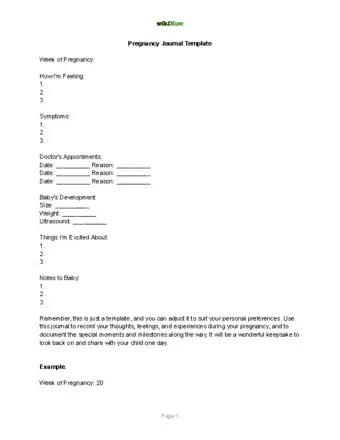



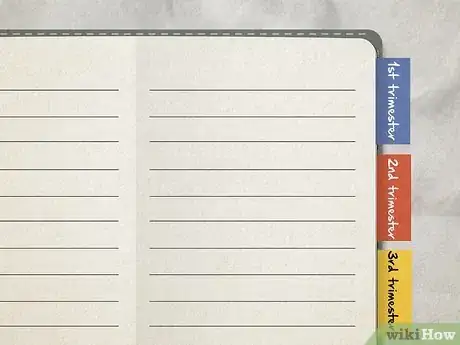
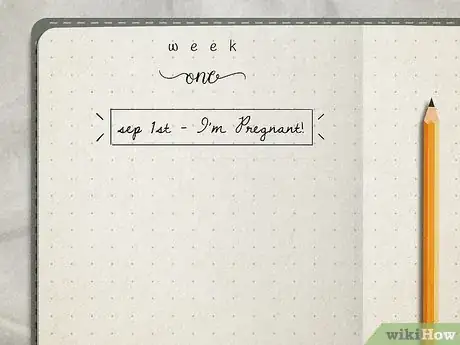
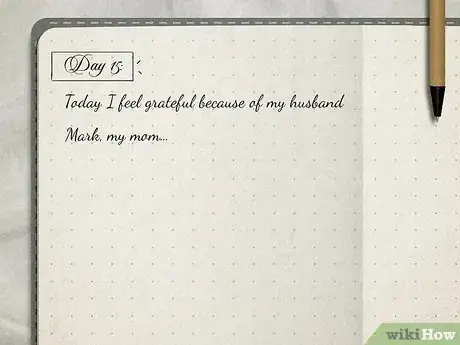



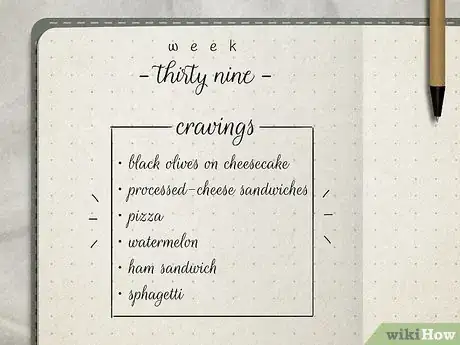



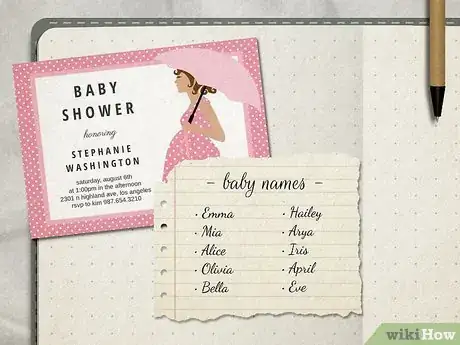

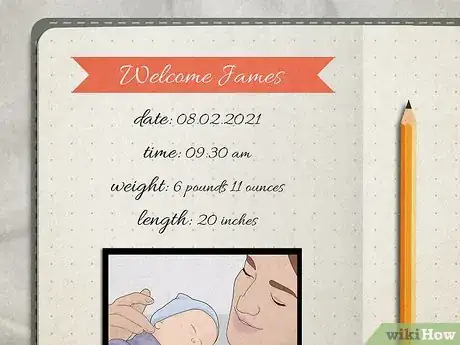




























































Medical Disclaimer
The content of this article is not intended to be a substitute for professional medical advice, examination, diagnosis, or treatment. You should always contact your doctor or other qualified healthcare professional before starting, changing, or stopping any kind of health treatment.
Read More...